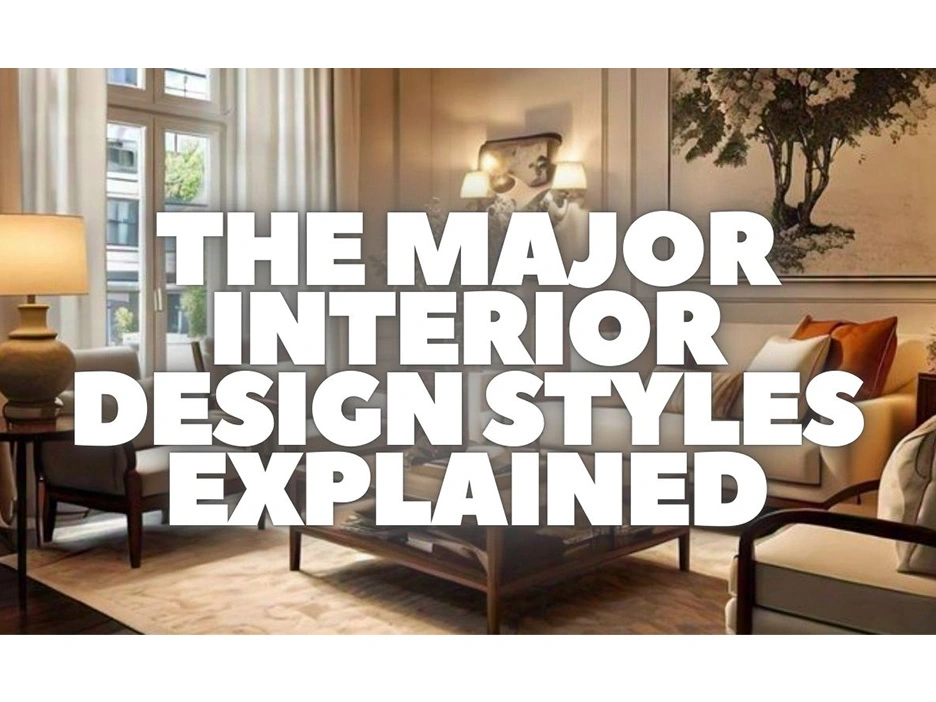Interior design is an art form that combines functionality with aesthetics to create spaces that reflect personality, lifestyle, and comfort. With so many design styles to choose from, it can be overwhelming to pinpoint what resonates best with your taste. Below, we explore the major interior design styles to help you understand their defining characteristics and how you can incorporate them into your home.
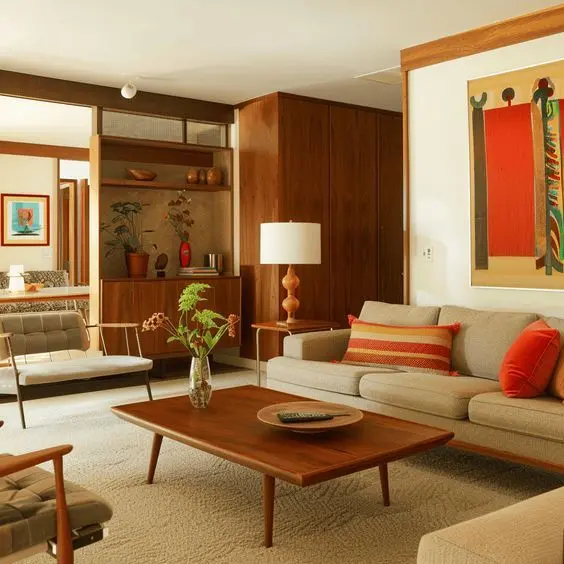
1. Midcentury Modern
- Key Features: Clean lines, organic shapes, functional furniture, and a focus on simplicity.
- Inspiration: Rooted in the 1940s-1960s post-war era, this style emphasizes minimalism with natural materials like wood and leather.
- Colors: Earthy tones such as olive green, mustard yellow, and walnut browns.
- How to Use: Opt for iconic furniture pieces like an Eames chair or a sleek sideboard. Pair with large windows to bring in natural light.
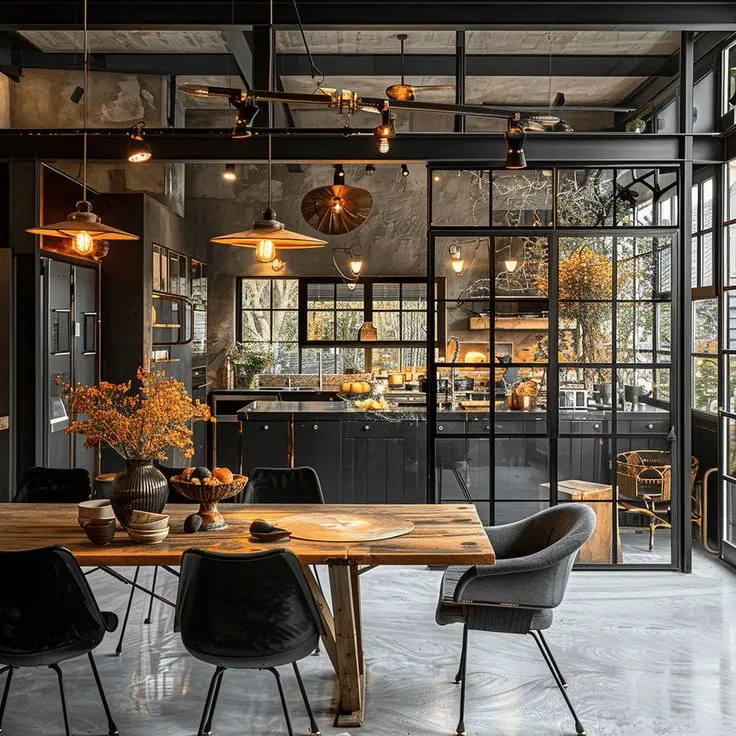
2. Industrial
- Key Features: Exposed brick, metal finishes, concrete surfaces, and raw wood.
- Inspiration: Inspired by urban lofts and warehouses, this style embraces the unfinished look.
- Colors: Neutral tones such as black, gray, and brown with metallic accents.
- How to Use: Incorporate exposed pipes, Edison bulb lighting, and reclaimed wood furniture for an edgy yet warm vibe.
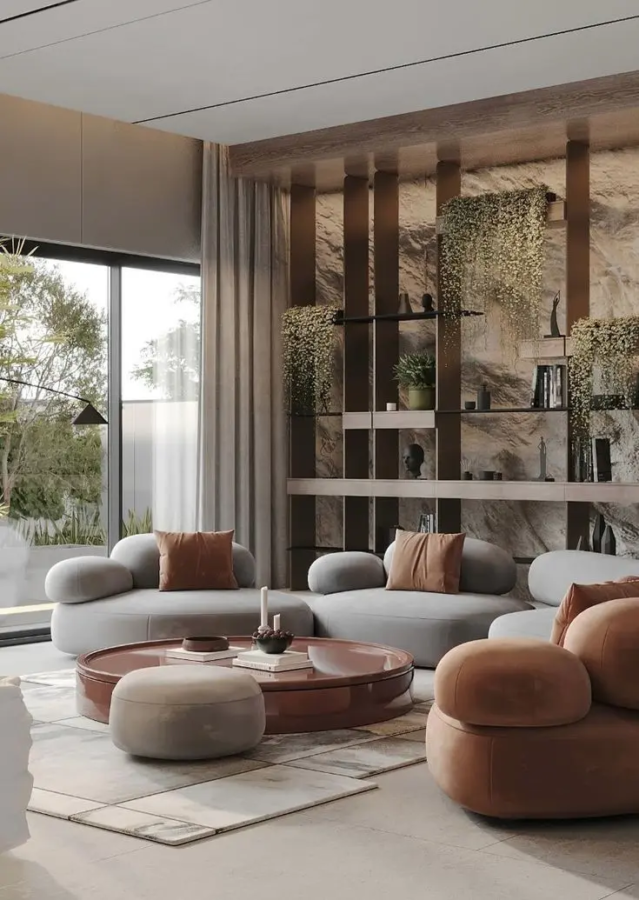
3. Contemporary
- Key Features: Sleek lines, open spaces, and modern materials like glass, steel, and polished surfaces.
- Inspiration: Evolving with time, contemporary style reflects the current trends while keeping functionality in focus.
- Colors: Neutral palettes with pops of bold color, often through art or accessories.
- How to Use: Embrace minimalist furniture with geometric shapes and layered lighting for an airy, sophisticated look.
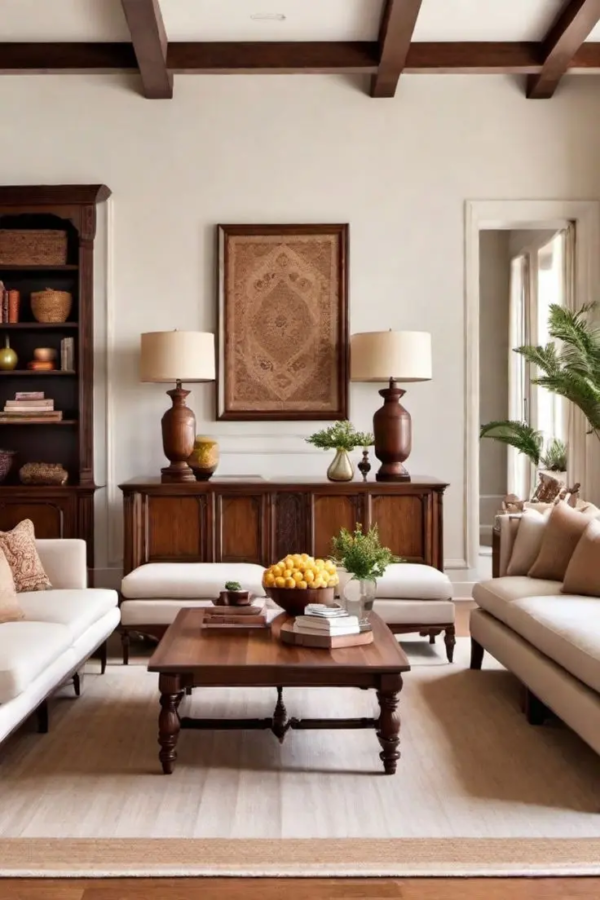
4. Traditional
- Key Features: Rich wood tones, ornate details, and classic patterns such as florals or damask.
- Inspiration: Eastern or European decor styles that exude elegance and timeless appeal.
- Colors: Warm, rich hues like burgundy, forest green, and navy, often paired with cream or gold.
- How to Use: Choose furniture with intricate carvings, heavy drapery, and antique-inspired accents to create a cozy, classic ambiance.
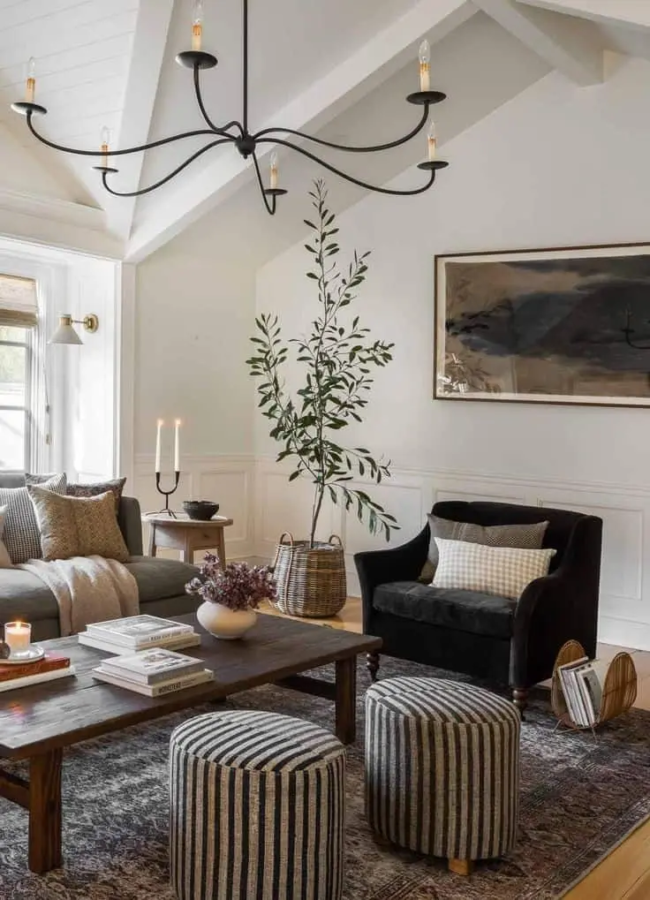
5. Transitional
- Key Features: A blend of traditional and contemporary elements, creating a balanced and versatile look.
- Inspiration: Designed for those who enjoy the warmth of traditional decor but want a modern twist.
- Colors: Neutral shades like beige, taupe, and gray with subtle accents.
- How to Use: Combine contemporary furniture with classic decorative touches like molding or vintage rugs for a cohesive look.
6. Scandinavian
- Key Features: Minimalist furniture, light woods, soft textures, and an emphasis on functionality.
- Inspiration: Nordic culture, focusing on simplicity and a connection to nature.
- Colors: Light neutrals like white, beige, and soft pastels.
- How to Use: Incorporate cozy textiles like throws and rugs, alongside simple yet functional furniture. Keep the decor minimal but intentional.
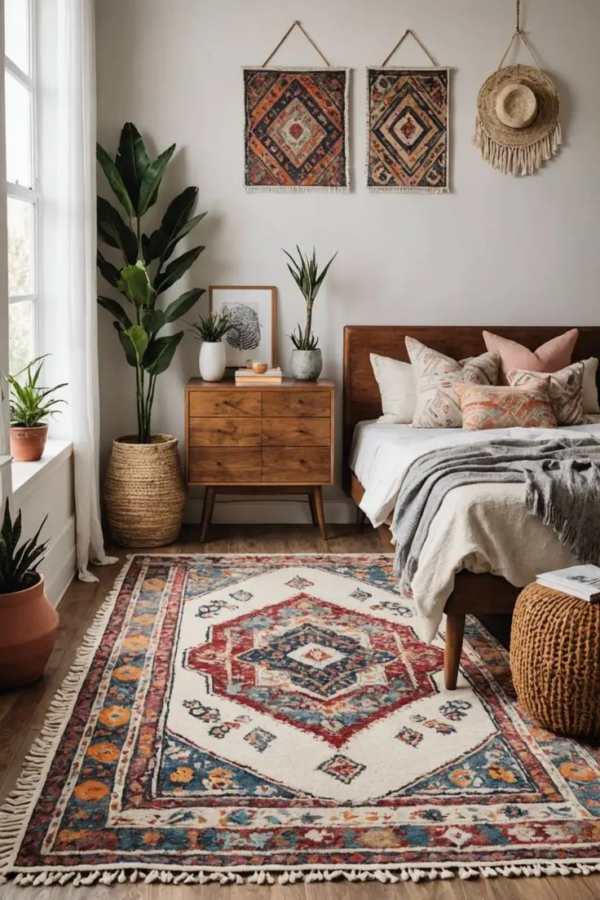
7. Bohemian
- Key Features: Layered textiles, eclectic decor, and an abundance of patterns and plants.
- Inspiration: A free-spirited, worldly vibe with influences from various cultures and eras.
- Colors: Rich jewel tones, earthy neutrals, and vibrant patterns.
- How to Use: Use macramé hangings, vintage rugs, and layered throw pillows to create a warm and inviting space. Add indoor plants for a natural touch.
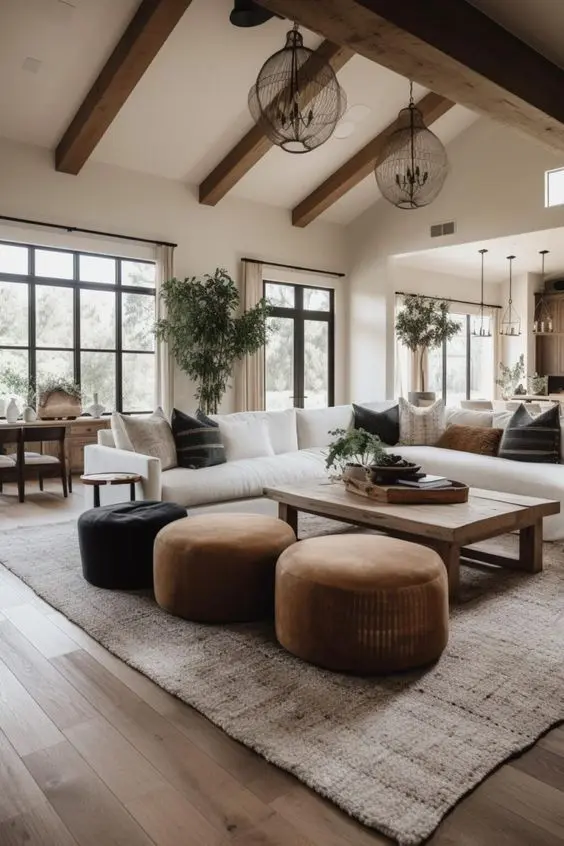
8. Modern Farmhouse
- Key Features: Rustic charm, cozy textures, and a touch of modern simplicity.
- Inspiration: A contemporary take on the classic farmhouse style, combining practicality with comfort.
- Colors: Neutral palettes, including whites, grays, and soft blues, with natural wood tones.
- How to Use: Use shiplap walls, sliding barn doors, and distressed wood furniture. Accessorize with galvanized metal accents and warm textiles like chunky knit throws.
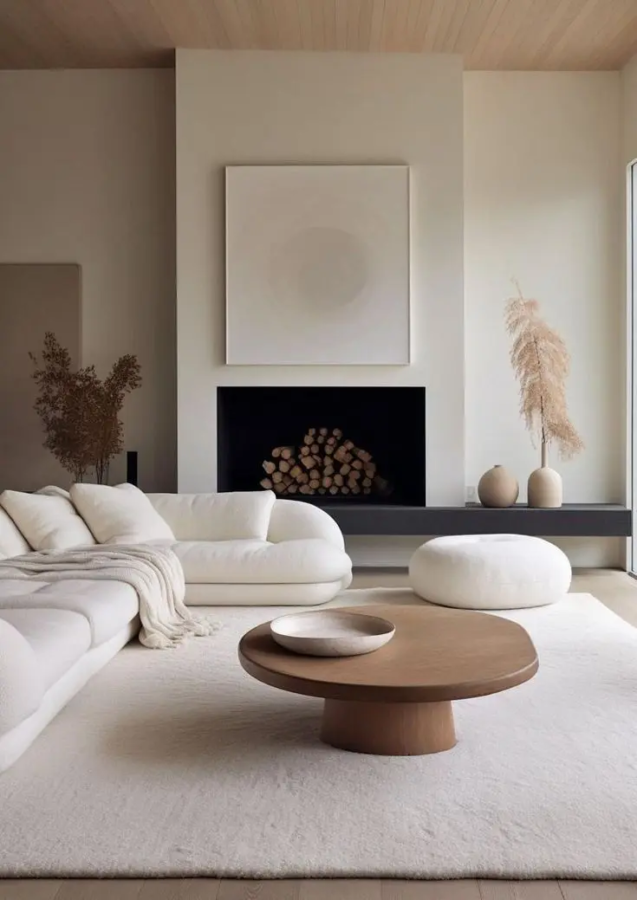
9. Minimalism
- Key Features: Clean lines, open spaces, and a focus on functionality over decoration.
- Inspiration: Rooted in the “less is more” philosophy, minimalism emphasizes simplicity and intentional living.
- Colors: Monochromatic schemes with occasional subtle accents.
- How to Use: Declutter your space and invest in high-quality, multifunctional furniture. Use minimal decor and let natural light enhance the space.
Understanding these nine interior design styles can help you identify your preferences and create a cohesive aesthetic for your home. Whether you’re drawn to the sleekness of contemporary design, the warmth of modern farmhouse, or the eclectic charm of bohemian style, the key is to personalize the space to reflect your lifestyle and taste. Happy designing!
For further design updates please visit our YouTube Channel:


